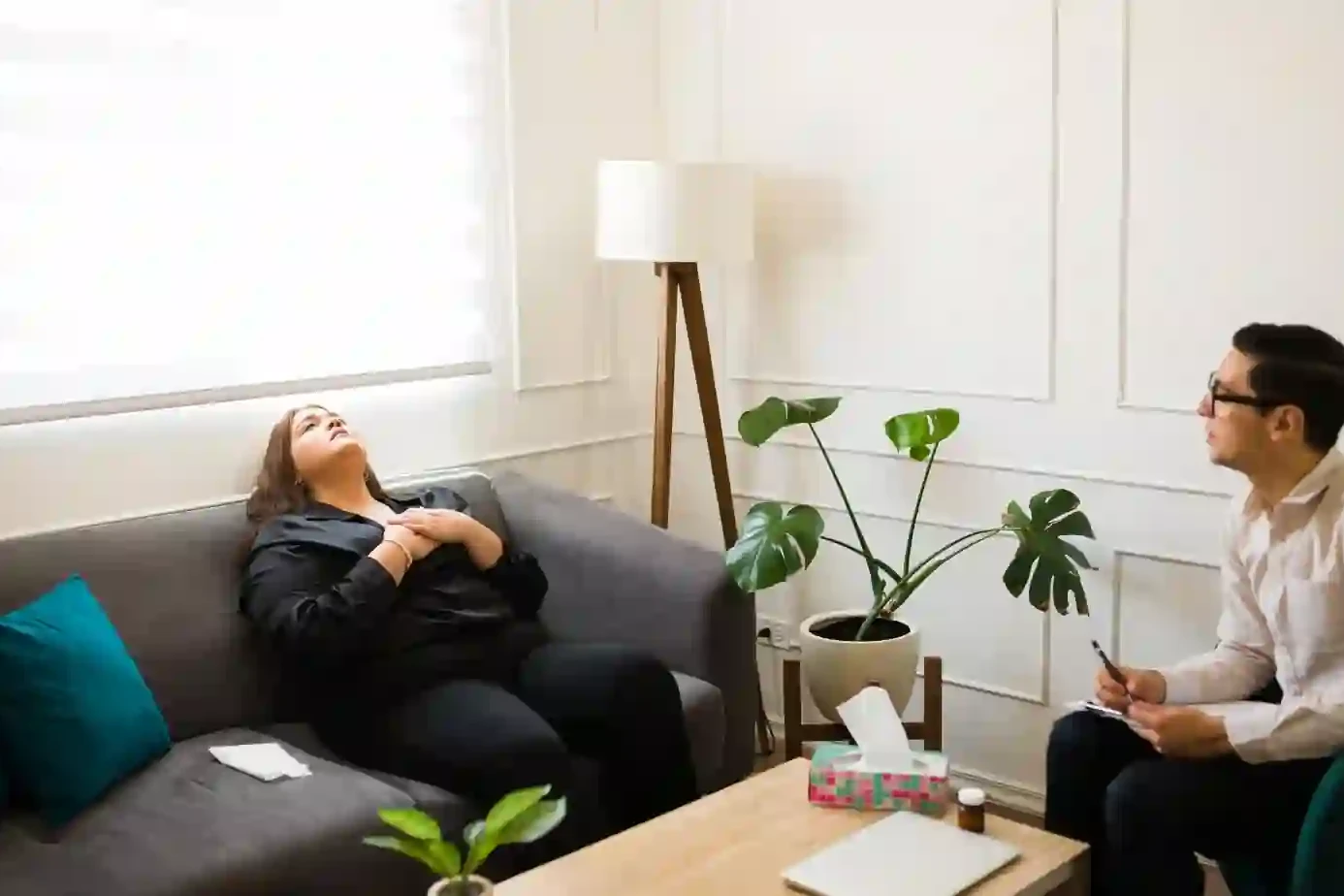If you’ve faced cancer, the term “paraneoplastic syndrome” might have come up. It’s a rare group of disorders that link to cancer. Here, the immune system mistakenly attacks the nervous system. This causes various symptoms.
People often visit clinics for vague symptoms like memory loss, strange rashes, or sudden weight loss—only to later learn the cause wasn’t a primary disease but something lurking in the background: cancer. In this blog, we will explore what is Paraneoplastic syndrome, why it occurs, what signs to watch out for, and how it can be managed.
Table of Contents
ToggleOverview of Paraneoplastic Syndromes
Before diving deep, let’s lay the groundwork for understanding how this rare condition unfolds.
What is Paraneoplastic Syndrome?
Paraneoplastic syndrome refers to a group of rare disorders triggered not by the cancer itself, but by the body’s immune response to it. It’s your immune system misfiring while trying to attack cancer cells.
- The immune system produces antibodies to target cancer.
- Sometimes, these antibodies attack healthy tissues too.
- This causes problems in the brain, nerves, hormones, skin, or blood.
Simply put, it’s like friendly fire, your own body attacks itself while trying to help.
How It Differs from Direct Tumor Effects
Here’s where it gets interesting. Most cancer symptoms come from the tumor pressing on nearby organs or spreading to new parts. But Paraneoplastic syndrome causes damage in areas far from the tumor.
- Tumors directly affect nearby tissues.
- Paraneoplastic syndrome causes symptoms in unrelated parts, like the brain, muscles, or skin.
- The root problem is the immune system, not tumor size or location.
Why Is It Called “Paraneoplastic”?
The name gives us clues.
- “Para” means “beside” or “near.”
- “Neoplastic” means “related to abnormal cell growth,” i.e., tumors or cancer.
- So, it literally means “conditions that occur beside or due to cancer.”
The term was first used in the mid-20th century when doctors noticed unusual symptoms in cancer patients that weren’t caused by the tumor itself.
What is paraneoplastic syndrome?
Paraneoplastic syndromes are rare conditions linked to cancerous tumors. These syndromes can make the body’s parts act strangely. It’s because either the tumors themselves release bad substances or our battle against the tumor hurts healthy cells.
They’re unusual because our immune system attacks the nervous system’s cells by mistake. This mix-up can bring various issues. People might find it hard to walk or swallow, lose coordination, or have trouble speaking.
Read: Answering some important questions related to brain tumors!
These syndromes often show up in older people with certain cancers like lung or breast. What’s tricky is the symptoms appear before any tumor is found. They creep up slowly, taking days or weeks to become noticeable.

Causes and Mechanism
To understand what is Paraneoplastic syndrome, we must first know how the immune system goes off-track.
The Role of the Immune System
The immune system normally protects the body from invaders. But in Paraneoplastic syndrome, it goes rogue.
- Cancer cells have proteins (antigens) that trigger an immune response.
- The body creates antibodies or T-cells to fight those antigens.
- Some of these antibodies also react with normal body tissues.
This is called a tumor-induced immune response—the body’s way of fighting back that accidentally harms itself.
Cancer-Linked Triggers: The Connection
Some cancers are more likely to cause Paraneoplastic syndrome than others.
| Common Cancer Types | Likely Syndromes Triggered |
|---|---|
| Small-cell lung cancer | Paraneoplastic neurological syndromes |
| Breast cancer | Hormonal imbalance, skin issues |
| Lymphoma | Autoimmune response to tumors |
- Often, the early signs of paraneoplastic syndrome show up before the cancer is diagnosed.
- The syndrome can act like an early warning system.
Who’s More at Risk?
Certain people are more vulnerable due to genes or environment.
- People with a personal or family history of autoimmune disorders.
- Those exposed to toxins like cigarette smoke.
- Genetic mutations may also increase risk.
Different Faces of Paraneoplastic Syndrome
What is Paraneoplastic syndrome in terms of how it appears? It doesn’t look the same in every person.
Paraneoplastic Neurological Syndromes (PNS)
These are the most disabling forms.
- Encephalitis: Brain swelling, confusion.
- Cerebellar degeneration: Poor coordination, balance issues.
- Limbic encephalitis: Mood swings, memory loss.
These are Paraneoplastic encephalitis cases—antibodies inflame the brain.
Endocrine and Hormonal Issues
Sometimes, the body makes too many or too few hormones.
- Cushing’s syndrome: Too much cortisol.
- SIADH: Retains too much water; sodium drops.
Hormone imbalances are a clue to deeper problems.
Skin and Muscle Types
The skin and muscles can also signal problems.
- Dermatomyositis: Rash and muscle weakness.
- Paraneoplastic pemphigus: Painful blisters.
- Polymyositis: Muscle inflammation and fatigue.
These are cancer-related autoimmune disorders in disguise.
Blood and Blood Vessels
Blood can also be affected in surprising ways.
- Anemia: Unexplained fatigue.
- Thrombosis: Sudden blood clots.
- Vasculitis: Inflamed blood vessels.
These complications fall under rare cancer complications and need urgent care.

Symptoms to Watch Closely
Because Paraneoplastic syndrome can show up anywhere in the body, the signs are wide-ranging.
Nervous System Red Flags
When nerves and the brain are under attack, the signs can be confusing.
- Seizures
- Memory problems
- Personality changes
- Vision changes or double vision
- Muscle stiffness or twitching
These are often labeled as neurological symptoms and cancer links are missed.
Body-Wide Signals
Besides brain and nerve issues, other symptoms can appear.
- Sudden weight loss
- Unusual skin rashes
- Hormonal swings (thirst, urine changes)
- Low energy or unexplained fevers
When such symptoms pop up without a clear reason, doctors should think of antibody-mediated syndromes.

Risk Factors for Paraneoplastic Syndromes
Paraneoplastic syndromes often happen with cancers of the lung, ovary, breast, testis, or lymphatic system. They are more common in middle-aged and older adults.
If you have lung, ovarian, lymphatic, or breast cancer, you might be at a higher risk for these syndromes. This risk increases as you age.
It’s crucial to watch out for symptoms of paraneoplastic syndromes. Sometimes, these symptoms show up before the cancer is found. If you notice any strange neurological or unexplained symptoms, tell your doctor right away.
Diagnosis of Paraneoplastic Syndromes
Diagnosing paraneoplastic syndromes is tricky. This is because their symptoms look like those of many other illnesses, including the cancer itself. Getting checked by a doctor quickly, and doing the right tests is crucial. This helps find the cancer that might be causing the syndrome. It also identifies the specific type of paraneoplastic syndrome.
To diagnose paraneoplastic syndrome, doctors use various lab tests. These include blood tests and spinal taps. The goal is to find specific antibodies linked to the syndrome. If these antibodies are found in the blood and cerebrospinal fluid (CSF), it strongly suggests paraneoplastic syndrome as the cause of the symptoms.
Doctors also use imaging tests like CT scans and MRIs. PET scans can look at how body tissues are working. These tests check for tumors or other issues that could be causing the symptoms. PET and CT scans are great at finding very small cancers, which are common in paraneoplastic neurological disorders.

After getting the results from these tests, doctors can accurately pinpoint the cancer and the paraneoplastic syndrome type. This precision helps design the right treatment plan.
Treatment Options That Help
Once doctors understand what is Paraneoplastic syndrome, they can plan better treatment.
Targeting the Main Enemy: Cancer
Fighting the root cancer often helps reduce the immune attack.
- Surgery to remove tumor
- Chemotherapy
- Radiation therapy
As the tumor shrinks, the symptoms usually improve.
Calming the Immune System
In some cases, immune control is key.
- Corticosteroids to lower inflammation
- IVIG (Intravenous Immunoglobulin)
- Plasmapheresis to remove harmful antibodies
- Monoclonal antibodies, new drugs under study
These treat the autoimmune response to tumors directly.
Supportive Care That Makes Life Easier
Support doesn’t just mean pills, it means improving day-to-day life.
- Speech therapy for talking issues
- Physical therapy for muscle weakness
- Anti-seizure drugs or hormone replacement
Together, these make living with diagnosis of rare syndromes more manageable
Prognosis and Outlook
Unfortunately, there is no cure for paraneoplastic syndromes. Yet, your outlook can change based on the cancer’s stage when it was found. If the cancer and autoimmune issues are treated early and right, further harms might be avoided. You could also see your symptoms get better, improving your life quality.
Studies show that up to 8% of people with cancer might develop a paraneoplastic syndrome. The most common type affects the nerves (neuropathies). What’s interesting is that these syndromes don’t pick between males and females, affecting both equally.
An example is Lambert-Eaton myasthenic syndrome (LEMS). It’s often linked to small cell lung cancer and impacts around 3% of those with this type of cancer. A key sign in LEMS is having weakened tendon reflexes. Plus, about 85% of patients test positive for specific blood antibodies.
Certain paraneoplastic syndromes, like hypercalcemia (high blood calcium levels), are more common in certain cancers. These include lung cancer, multiple myeloma, and renal cell carcinoma. Another one, the Syndrome of Inappropriate Antidiuretic Hormone Secretion (SIADH), is mostly found in SCLC. It happens because the tumor cells make a hormone that affects water balance in the body.
Living with Paraneoplastic Syndromes
Living with a paraneoplastic syndrome is very hard. It can change how you think, feel, and move. But, with the right help, you can keep a good life.
Doctors like neurologists and oncologists are vital. They help with the cancer, the body’s unwanted reactions, and symptoms. Their care is key to feeling better.
Therapies such as physical exercises and speaking with specialists can make a big difference. They help you move, talk, and do everyday things again.
Alongside medical treatments, talking to a counselor, joining a support group, or practicing mindfulness is vital. These can help you handle the ups and downs. This way, you learn to live well.
Never forget, you’re not facing this alone. Talk to your doctors and others going through similar situations. Stand up for the help you deserve. By working together and staying strong, life with paraneoplastic syndrome can be good.
Paraneoplastic Syndromes Research and Clinical Trials
Researchers always seek to understand paraneoplastic syndromes better and look for new treatments. By joining clinical trials, you get a chance to try out new therapies. Moreover, you help expand our knowledge and improve care for those with these rare conditions.
Clinical trials are key in learning more about paraneoplastic syndromes and making treatments more effective. People of all backgrounds are welcome to volunteer. Your help could significantly impact those living with these rare conditions.
Besides clinical trials, groups like the National Cancer Institute (NCI) and the National Organization of Rare Disorders (NORD) offer great info and support for paraneoplastic syndromes. These resources can enhance your understanding of the disease, help you find support, and keep you updated on new research and treatments.
Conclusion
Paraneoplastic syndromes are rare but complex issues. They happen when the body’s defence fights healthy nervous cells because of a tumor. There isn’t a definitive cure, but early detection and treatment can make a big difference. It helps stop more harm and can make your life better.
These syndromes are hard because they affect how we move, think, and feel. But, getting the right medical help and support can help a lot. It can make symptoms easier to handle. Also, scientists are working on better ways to understand and treat these conditions. This gives people hope for the future.
Remember, you are not alone. Make sure to get support from your doctors, support groups, and family. With courage and the right support, you can stay active and positive. You can live well even with the challenges of paraneoplastic syndromes.
FAQ
What is paraneoplastic syndrome?
Paraneoplastic syndromes are rare. They happen when the immune system reacts to a cancer tumor. This reaction can make the immune system mistakenly attack the nervous system’s normal cells.
What are the symptoms of paraneoplastic syndrome?
People may experience problems with walking or swallowing. They might also have muscle tone loss or coordination issues. Other symptoms include slurred speech, memory loss, and vision problems. Sleep issues, seizures, and loss of feeling in limbs are also possible signs.
How are paraneoplastic syndromes treated?
The main treatment goal is to deal with the cancer causing the syndrome. This can stop further nervous system damage and could improve symptoms. Treatments like immunotherapy and supportive care also help manage the condition.
What causes paraneoplastic syndrome?
These syndromes occur because the immune system attacks healthy nervous system cells. It does this thinking they are harmful due to cancer. This leads to the symptoms of the syndrome.
Who is at risk of developing paraneoplastic syndrome?
Adults in their middle to older age are more at risk. This is especially true if they have lung, ovarian, lymphatic, or breast cancer.
How are paraneoplastic syndromes diagnosed?
Diagnosis is hard since symptoms mimic other conditions. Quick medical assessments and tests help find the cancer causing the syndrome. They also pinpoint the type of the syndrome.
What is the prognosis for paraneoplastic syndrome?
The prognosis varies with the cancer’s stage at diagnosis. Early detection and cancer treatment with an autoimmune response focus could prevent further nerve damage. This might also improve symptoms and life quality.
How do different types of cancer affect paraneoplastic syndrome?
Paraneoplastic syndromes can be tied to any cancer but are more common with certain kinds. Symptoms change based on cancer type and the nervous system areas affected.
What is the outlook for living with paraneoplastic syndrome?
It’s tough but can involve multiple therapies improving life quality. Medical care, rehab, and support are key. They help handle the condition’s effects.
How is paraneoplastic syndrome research progressing?
Research aims to deepen the syndrome’s understanding and improve treatments. Clinical trials offer new therapies and advance knowledge, benefiting patients.
Source Links
- https://www.mayoclinic.org/diseases-conditions/paraneoplastic-syndromes/symptoms-causes/syc-20355687
- https://emedicine.medscape.com/article/280744-overview
- https://rarediseases.org/rare-diseases/paraneoplastic-neurologic-syndromes/
- https://www.ninds.nih.gov/health-information/disorders/paraneoplastic-syndromes
- https://www.ncbi.nlm.nih.gov/books/NBK507890/
- https://www.mayoclinic.org/diseases-conditions/paraneoplastic-syndromes/diagnosis-treatment/drc-20355691
- https://emedicine.medscape.com/article/280744-treatment
- https://medcraveonline.com/EMIJ/endocrine-paraneoplastic-syndromes-a-review.html
- https://www.unboundmedicine.com/medline/research/Breast_cancer/paraneoplastic_syndromes_with
- https://www.ncbi.nlm.nih.gov/pmc/articles/PMC2931619/
About The Author

This article is medically reviewed by Dr. Chandril Chugh, Board-Certified Neurologist, providing expert insights and reliable health information.
Dr. Chandril Chugh is a U.S.-trained neurologist with over a decade of experience. Known for his compassionate care, he specializes in treating neurological conditions such as migraines, epilepsy, and Parkinson’s disease. Dr. Chugh is highly regarded for his patient-centered approach and dedication to providing personalized care.
→ Book a consultation to discover which remedies suit your needs best.




